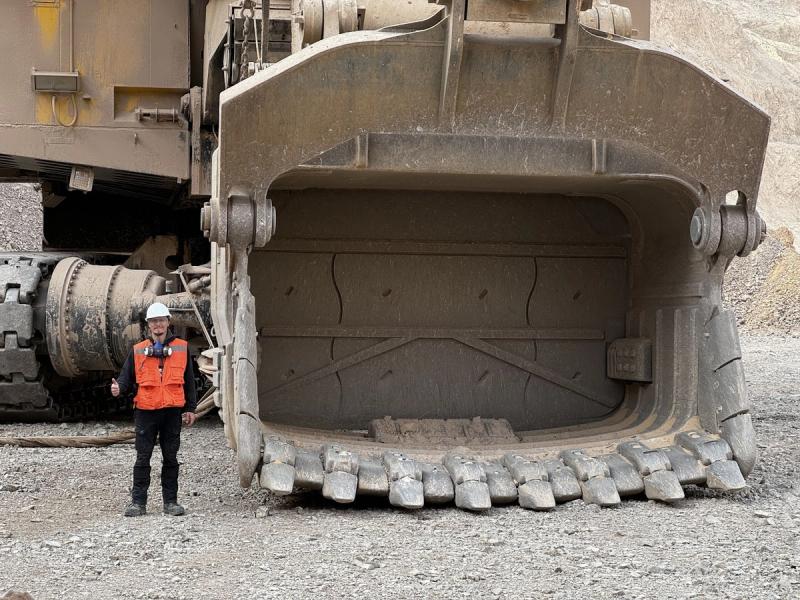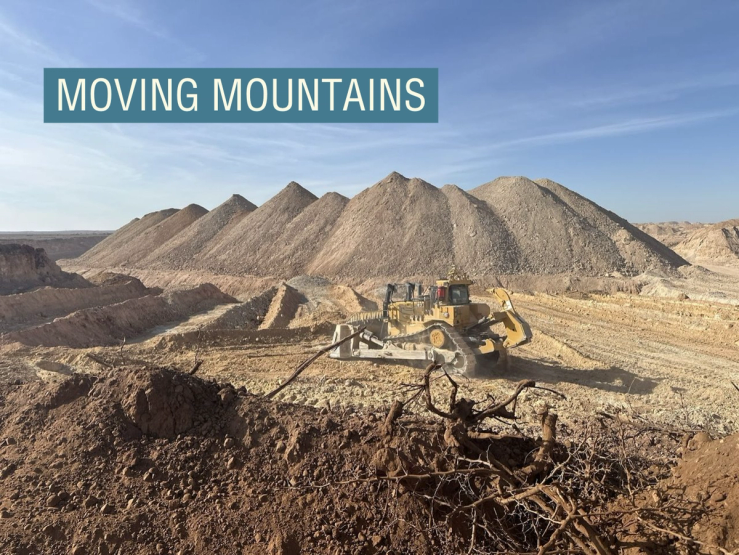The Scoop
Tech startup AIM Intelligent Machines, which retrofits heavy construction equipment to operate autonomously, has raised $50 million, the company exclusively told Semafor. Participants include Khosla Ventures, General Catalyst, and Human Capital.
AIM plans to use the funds to grow its 40-headcount workforce and expand to a new Washington state facility, said CEO Adam Sadilek, a veteran of Waymo and Google Brain. The company did not disclose its valuation.
The startup attaches the same sensors that power many self-driving cars to machinery like bulldozers and excavators, which build a real-time, three-dimensional map of the equipment’s surroundings. An edge compute system then takes over the controls to dig, haul, plow, fill, and level the ground — or “move earth” in industry-speak — without a human in the driver’s seat. Only one person is needed to remotely manage an entire site of working vehicles by giving them high-level commands like “bring the grade in this area down by 12 feet.”
This could also help with the steep labor shortages delaying new construction projects. The industry needs to employ an additional 440,000 workers this year and 500,000 next year to keep up with demand, on top of the 8.3 million already employed, the Associated Builders and Contractors (ABC) found.
AIM’s technology could not only accelerate backlogged construction but also fuel the infrastructure expansion needed to win the AI race, according to Sadilek. Many of the startup’s existing customers include mining firms extracting components for GPUs and companies breaking ground on new data center facilities.
“The mine sites are always leaving money on the table because they don’t mine as much per hour as they could,” Sadilek said. “They have plenty of machines but not enough humans to activate them. Underutilization is a huge cost.”

Know More
AIM joins a segment of AI companies automating manual labor, from warehouse-sorting machines to burger-flipping robot arms. The startup trains its AI systems by giving a machine instructions and making it learn on its own. It then grades itself on factors like how much dirt it moved and fuel it burned, redoing the task until it reaches peak performance.
Autonomous construction technology not only improves efficiency but safety as well, Sadilek said. Removing humans from earth-moving sites eliminates the risk of workers getting injured or killed. In 2023, the most recent data available from the US Labor Department, 49 construction equipment operators were killed on the job. The agency logged nearly 15,000 injuries for those workers in the combined years 2021 and 2022, the most recent timeframe it published the data.
AIM competes in a growing market of AI-powered construction machinery. US-based SafeAI similarly retrofits existing construction fleets with its technology. Japan’s Hitachi Construction Machinery, worth $6.5 billion, offers autonomous off-road dump trucks for the mining industry. Other companies tackle the safety of construction zones and mines, with Boston Dynamics’ dog-like robot inspecting sites for potential health and safety hazards — something AIM’s digging machines don’t do.

Sadilek wouldn’t discuss pricing details but said each machine generates roughly $1 million in increased value for companies per year because of the additional work it can accomplish. AIM takes a portion of that value created as revenue.
ABC’s Matt Abeles, vice president of construction technology and innovation, told Semafor autonomous construction machines “should drive down costs for business in the long term.” They will also shift what jobs in the sector look like, he added, with new jobs and upskilling workforce initiatives focused more on how to work with AI-retrofitted equipment.
Step Back
The mission and long-term plan behind AIM is to address the impacts of climate change, specifically by building seawalls that can protect coastal areas from rising ocean levels, Sadilek said. Major population hubs, including New York, Shanghai, and Mumbai, are at risk of storm surges and flooding associated with rising sea levels over the next few decades. Rather than having to move millions of people from coastal areas, “they can stay where they are, and we’ll just adjust the environment around them.”
AIM is currently building small sea walls, Sadilek said, and is working with the US Army Corps of Engineers to initiate large-scale projects.


